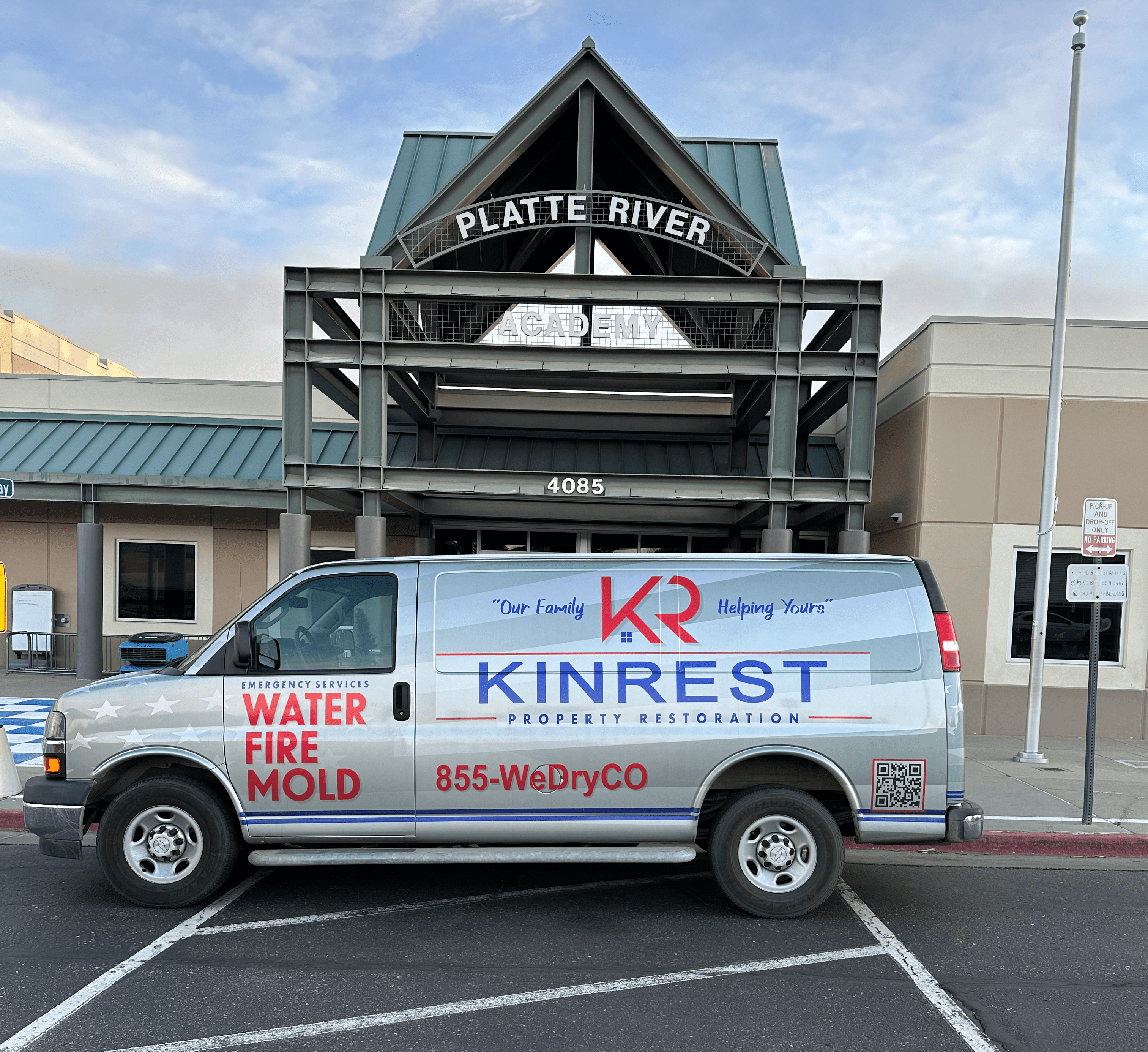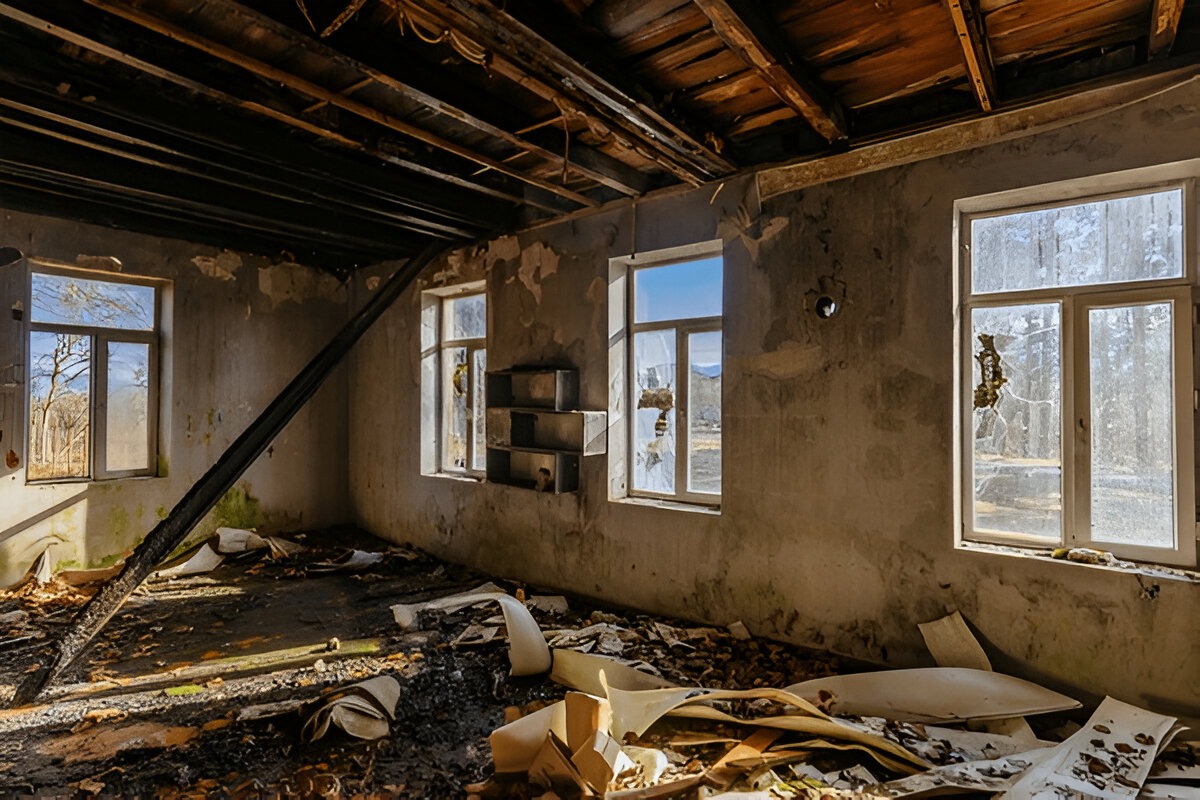Water damage is more common than most homeowners realize. According to the Insurance Information Institute, water damage accounts for over $13 billion in property losses annually in the United States. What’s even more alarming is that 1 in 50 homeowners will file a water damage claim each year. Whether caused by a burst pipe, leaky roof, or flooding, water damage can cause significant destruction within hours.
The first 24 hours are crucial in minimizing the impact. Studies show that the chances of extensive mold growth increase by 1,000% within the first 48 hours after water intrusion. In this guide, Kinrest Property Restoration will walk you through the critical steps to take in the first 24 hours after water damage strikes, why time is your biggest asset, and how acting fast can save you thousands in repair costs.
In this blog, Kinrest Property Restoration walks you through exactly what to do, when to do it, and why fast, decisive action is the best defense for water damage restoration.
What Is Water Damage?
Water damage refers to the destruction or deterioration of property caused by unwanted moisture intrusion. This moisture can come from clean sources, like broken pipes, or contaminated sources, like sewage backups.
Unlike surface spills, water damage penetrates walls, soaks flooring, and weakens foundational elements. Left untreated, it can lead to dangerous mold growth, rot, and structural instability. It’s a silent destroyer, often hidden behind walls and beneath floors.
Causes of Water Damage: A Leak Is Just the Beginning
Water damage usually begins subtly, but quickly escalates. Some of the most common sources include:
- Burst or Leaky Pipes: These often occur in winter due to freezing temperatures, causing pipes to expand and crack. Leaks may start small but can release gallons of water in hours.
- Appliance Failures: Dishwashers, washing machines, or water heaters can fail without warning. A broken hose or valve can flood entire rooms before you notice.
- Roof Damage: Missing shingles or clogged gutters can lead to water seeping into the attic or walls. This slow drip can cause mold and structural warping over time.
- Natural Disasters or Flooding: Heavy rains or rising groundwater can overwhelm foundations, especially in flood-prone areas. When water has nowhere else to go, it finds its way into your home.
Each of these causes can be sudden or gradual, but the outcome is often the same: extensive, hidden damage that worsens by the minute.
Also Read: How to Recover After a House Fire in Denver: A Step-by-Step Guide
Risk Factors: Is Your Home at Higher Risk?
Some homes are naturally more vulnerable to water damage. Factors that increase your risk include:
- Aging Infrastructure: Older homes tend to have outdated plumbing, roofing, and drainage systems that are prone to failure. What held up decades ago might not meet today’s demands.
- Poor Drainage Systems: Homes with clogged gutters or improperly graded landscapes can allow water to pool near foundations, leading to leaks and erosion.
- Basements and Crawlspaces: These lower-level areas are naturally at risk due to gravity. They’re the first to flood during heavy rain or plumbing failures.
- Neglected Maintenance: Ignoring minor issues like small leaks, cracked caulk, or rusted connections can lead to catastrophic failures later.
Understanding these risks can help you take preventive steps, like annual inspections or upgrades, to avoid major headaches later.
Why Time Is Critical: The 24-Hour Rule
Time is your biggest enemy when water invades your home. Here’s how quickly things escalate:
- Within 1 Hour: Water begins seeping into everything it touches—wood floors, drywall, insulation, and personal belongings. Even clean water begins to compromise materials almost immediately.
- Within 4 Hours: Absorbed moisture causes wood to swell, paint to blister, and drywall to buckle. Furniture stains and damages the nearby flooring.
- Within 12–24 Hours, Mold spores activate and start spreading. Air quality becomes hazardous, and bacteria start forming in damp environments.
- Beyond 24 Hours: The situation becomes a biohazard. Mold spreads extensively, the structure starts degrading, and insurance claims become more complicated or even denied.
Swift action minimizes long-term damage, saves money, and protects your health.
Hour-by-Hour Guide: What Homeowners Should Do
- Hour 0–1: Ensure Safety First
Before anything else, make sure the area is safe. Turn off the electricity and gas supply if the water level is high or touching outlets and appliances. If the source of the water is still running, locate and shut off the main valve.
Prioritize family and pets—get everyone out of the affected area if necessary. Lastly, document everything with photos and videos to strengthen your insurance claim later.
- Hour 1–3: Stop the Spread
Start removing standing water using buckets, towels, or a wet/dry vacuum. Time is of the essence—every second the water sits increases your losses. Move rugs, electronics, furniture, and other valuables to a dry area.
Open windows and doors to promote air circulation, and set up any fans you have. Ventilation is critical for beginning the drying process.
- Hour 3–6: Begin Disinfection and Cleanup
Now that surface water is mostly gone, it’s time to clean and disinfect. Use a mild bleach solution or commercial-grade disinfectants to wipe down walls, floors, and surfaces. This prevents mold and bacteria from gaining a foothold.
Remove carpets and area rugs that are soaked through; they trap moisture and are very difficult to dry out completely. Inspect hidden corners and less obvious areas like inside closets or behind appliances.
- Hour 6–12: Monitor and Maintain Drying
Don’t stop now. Continue running dehumidifiers and fans—drying takes hours and must be sustained. Check under floorboards and behind walls if possible, as trapped moisture leads to hidden mold. Use a moisture meter if available to check areas that feel dry but may still contain high humidity.
At this point, you should contact your insurance company to start the claims process and document every step of the cleanup.
- Hour 12–24: Contact Restoration Professionals
Once the immediate cleanup is done, it’s time to bring in experts like Kinrest Property Restoration. Restoration pros will assess damage more thoroughly, using tools like thermal imaging to find moisture behind walls.
They’ll also begin planning for full restoration—including mold remediation, structural drying, and potential material replacement. Avoid DIY tear-downs—they can disturb mold or create unsafe conditions.
Why Call Professionals Like Kinrest Property Restoration?
Calling a professional water damage restoration company isn’t just about drying things up—it’s about restoring your home safely and fully:
- Specialized Tools and Technology: We use industrial-grade dehumidifiers, air movers, and moisture meters to ensure no hidden pockets of water remain.
- Mold Expertise: Mold can begin growing within 24 hours. We identify, contain, and remove mold according to strict industry protocols.
- Structural Restoration: From replacing drywall to repairing floors and ceilings, Kinrest handles complete rebuilds with quality craftsmanship.
- Insurance Navigation: We help homeowners document and process claims properly to maximize reimbursement and reduce hassle.
Water damage isn’t a DIY weekend project—it’s a health, safety, and structural risk that demands expert attention.
Summary: Protecting Your Home in the First 24 Hours After Water Damage
Water damage can wreak havoc on your home if not addressed promptly. The first 24 hours are critical in mitigating the impact and preventing further issues like mold growth or structural damage.
In the initial hour, your primary focus should be on safety—turn off the electricity, stop the water flow, and document the damage for insurance purposes. In the next few hours, remove standing water, move valuables to safety, and increase airflow to help dry out the area. Disinfect affected surfaces and check for hidden moisture by the 3–6-hour mark to prevent bacteria and mold from taking hold.
By the 12-hour point, make sure to contact your insurance company and start the claims process. At the 24-hour mark, calling in professionals like Kinrest Property Restoration is essential for thorough inspection, mold remediation, and comprehensive restoration.
Timely action—along with professional help—can save your home from long-term damage and costly repairs. The first 24 hours matter, and with Kinrest, you’re never alone in the recovery process.
Conclusion: Rebuild Better with Kinrest Property Restoration
At Kinrest Property Restoration, we know that water damage can feel overwhelming. That’s why we offer fast, effective, and compassionate support—24 hours a day, 7 days a week. Our trained professionals handle everything from emergency water removal to complete structural repairs.
We’re proud to serve homeowners with:
- 24/7 Emergency Response
- Certified Restoration Experts
- Mold Detection & Removal
- Insurance Claim Assistance
- Full-Service Home Restoration
Your home deserves the best recovery plan. Let Kinrest be your first call after water damage. We’ll be there within hours, restoring not just your property, but your peace of mind.
Need Help Now?
Call Kinrest Property Restoration or visit us to learn more or request immediate help.



